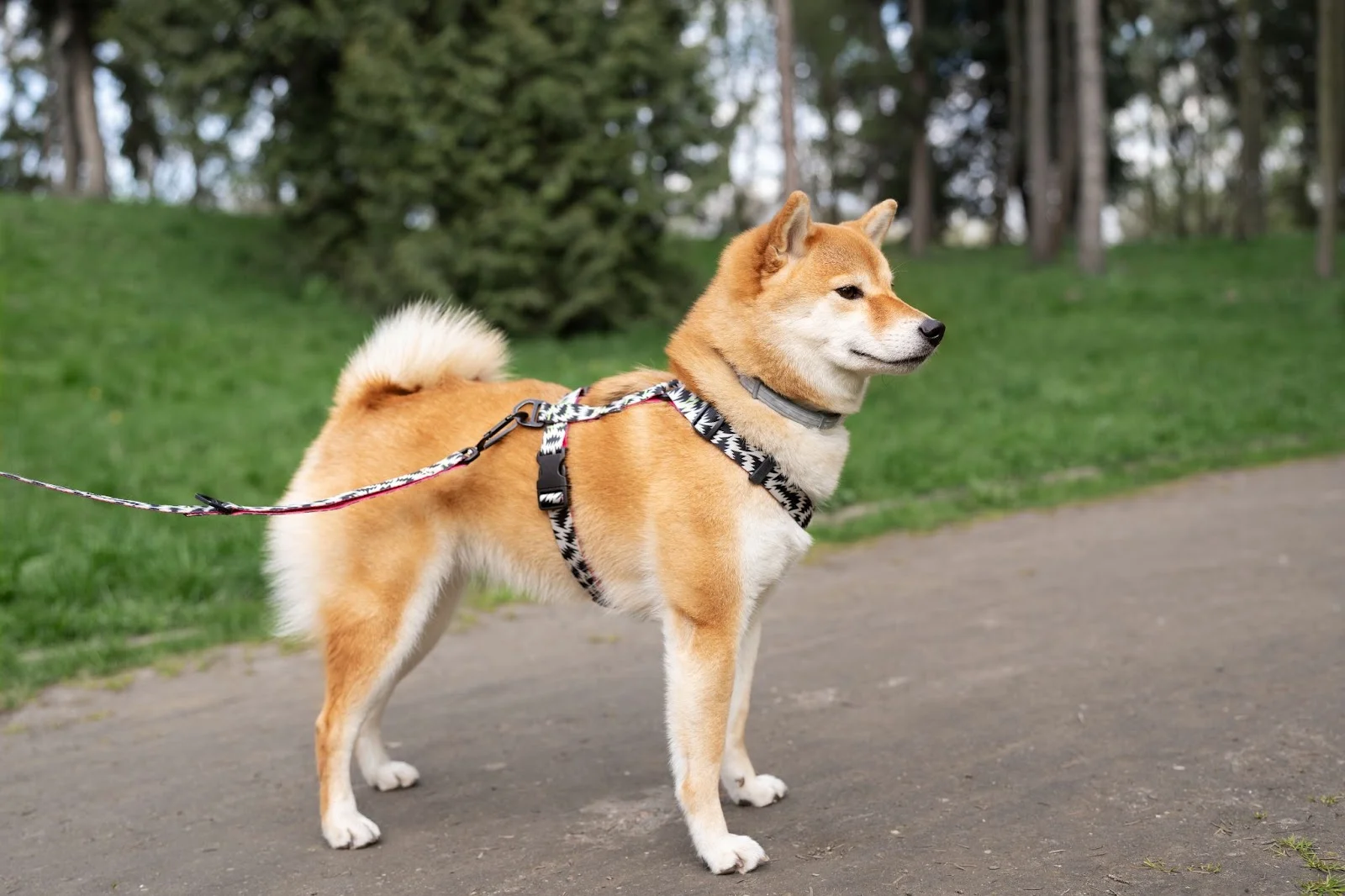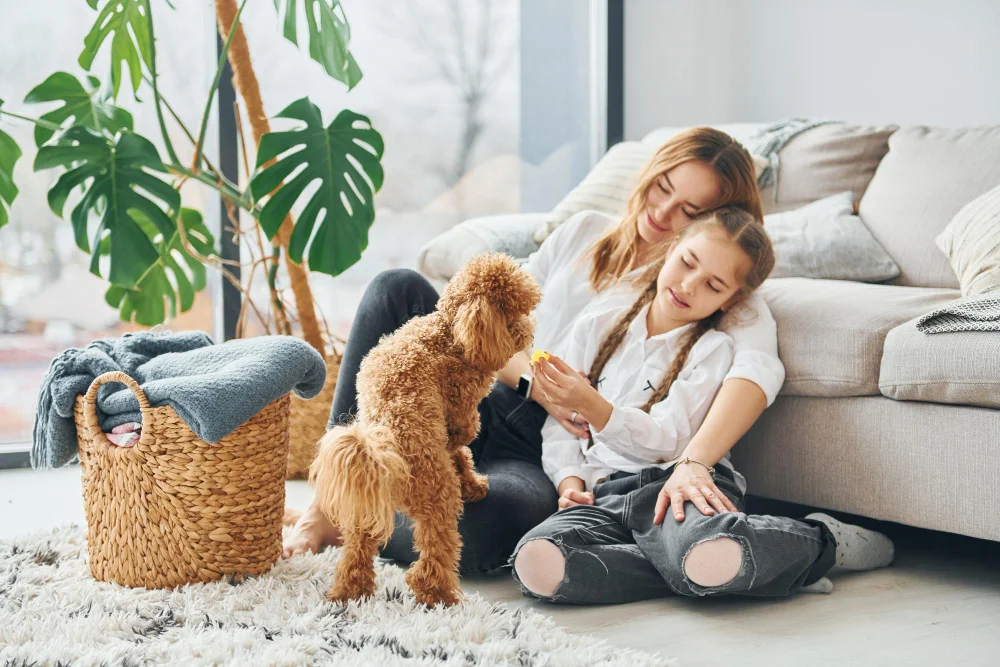Dogs bring joy and companionship to our lives, and for many of us, they’re not just pets; they’re family. Ensuring their safety and comfort is a top priority, especially when it comes to taking them for walks or car rides. One essential tool for this purpose is a dog harness. Unlike traditional collars, harnesses distribute pressure more evenly across a dog’s body, reducing the risk of injury and providing better control. In this step-by-step guide, we’ll walk you through the process of properly putting your dog in a harness, ensuring a comfortable and secure fit for your furry friend.
Why Use a Dog Harness?
Before we dive into the step-by-step instructions, let’s briefly discuss why using a dog harness bundle is beneficial:
- Safety: Harnesses are designed to prevent neck injuries to dogs, which can occur with traditional collars, especially in dogs prone to pulling. They distribute the force evenly across the chest and shoulders.
- Control: A harness gives you better control over your dog, making it easier to manage their behavior during walks or in potentially challenging situations.
- Reduced Choking Risk: Traditional collars can lead to choking if a dog pulls too hard. Harnesses eliminate this risk by distributing pressure across a wider area.
- Training Aid: Many trainers recommend harnesses for puppies and dogs in training, as they provide more control and support during teaching sessions.
Now, let’s get started with the step-by-step guide to properly put your dog in a harness:
Step 1: Choose the Right Harness
Before you even put the harness on your dog, it’s crucial to select the right one. Dog harnesses come in various styles, including:
- Step-in harness: These are easy to put on and great for dogs who are cooperative during the process.
- Over-the-head harness: These go over the dog’s head and are suitable for dogs who don’t like having their legs lifted.
- Vest harness: These offer added coverage and can be suitable for dogs with certain medical conditions or those needing extra support.
Ensure you measure your dog’s girth correctly to choose the appropriate size. Consult the manufacturer’s sizing guide and consider the type of harness that suits your dog’s temperament and needs.
Step 2: Get Your Dog Used to the Harness
Before you attempt to put the harness on your dog, allow them to become familiar with it. Place the harness near your dog’s bed or in their favorite play area, allowing them to investigate it on their own. You can also encourage positive associations by giving treats or praise when your dog sniffs or interacts with the harness.
Step 3: Prepare for Harnessing
Before you start, have the following items ready:
- The properly sized harness.
- Treats or a favorite toy for positive reinforcement.
- A calm and quiet environment to minimize distractions.
Step 4: Proper Positioning
Here’s how to put the harness on your dog correctly:
- Lay the harness flat: Place the harness on the ground with the inside facing up. If your harness has multiple straps, make sure they’re untangled and lying flat.
- Step into the harness: If you’re using a step-in harness, gently guide your dog’s legs into the openings. Ensure that the harness is positioned with the D-ring on the dog’s back.
- Adjust the fit: If it’s an over-the-head or vest harness, slide it over your dog’s head and position it on its back. Adjust the straps to ensure a snug fit without being too tight. You should be able to fit two fingers comfortably between the harness and your dog’s skin.
- Secure the buckles: If your harness has buckles, secure them according to the manufacturer’s instructions. Make sure they are properly fastened, so the harness stays in place.
Step 5: Positive Reinforcement
Throughout the process, use positive reinforcement to make your dog associate the harness with positive experiences. Offer treats and praise when your dog allows you to put on the harness. This helps build a positive connection and makes harnessing a more enjoyable experience for your dog.
Step 6: Check for Comfort and Fit
After you’ve put the harness on your dog, it’s essential to check for comfort and fitness. Here’s what to look for:
- Freedom of movement: Your dog should be able to move its legs freely without any restrictions.
- No chafing or rubbing: Ensure that the harness doesn’t cause any chafing or rubbing on your dog’s skin.
- Proper alignment: The harness should be centered on your dog’s back, and the D-ring should be positioned in the middle.
- Tightness: Check that the harness is snug but not too tight. You should be able to fit two fingers between the harness and your dog’s skin.
Step 7: Practice and Patience
Don’t expect your dog to be comfortable with the harness immediately. Some dogs may take time to adjust to this new sensation. Practice putting on and taking off the harness in short sessions, gradually increasing the time your dog wears it. Offer treats and positive reinforcement to reward your dog’s cooperation.
Step 8: Safety Reminders
Here are some important safety reminders when using a dog harness bundle:
- Regularly check the fit: Dogs can change size or lose or gain weight, so periodically check that the harness still fits correctly.
- Inspect for wear and tear: Make sure to examine the harness for any signs of wear and tear, such as frayed straps or broken buckles. Replace the harness if it’s damaged.
- Don’t leave the harness on 24/7: While a harness is great for walks and car rides, it’s not meant to be worn constantly. Remove the harness when your dog is at home or in a safe, enclosed area.
- Never use a leash on a collar with a harness: Always attach the leash to the D-ring on the harness, not the collar. This ensures that the pressure is evenly distributed and reduces the risk of injury.
- Consult a professional: If you’re unsure about the proper fit or use of a harness, consult a professional dog trainer or veterinarian for guidance.
Conclusion
Properly putting your dog in a harness is a vital step in ensuring their safety, comfort, and well-being during walks and other activities. By following this step-by-step guide and being patient and positive with your dog, you can make the harnessing process a positive and stress-free experience for both you and your furry companion. Remember that safety and comfort should always be your top priorities, so choose the right harness, check the fit regularly, and consult a professional if needed. With the right approach, your dog will be ready for exciting adventures with you in no time.


















